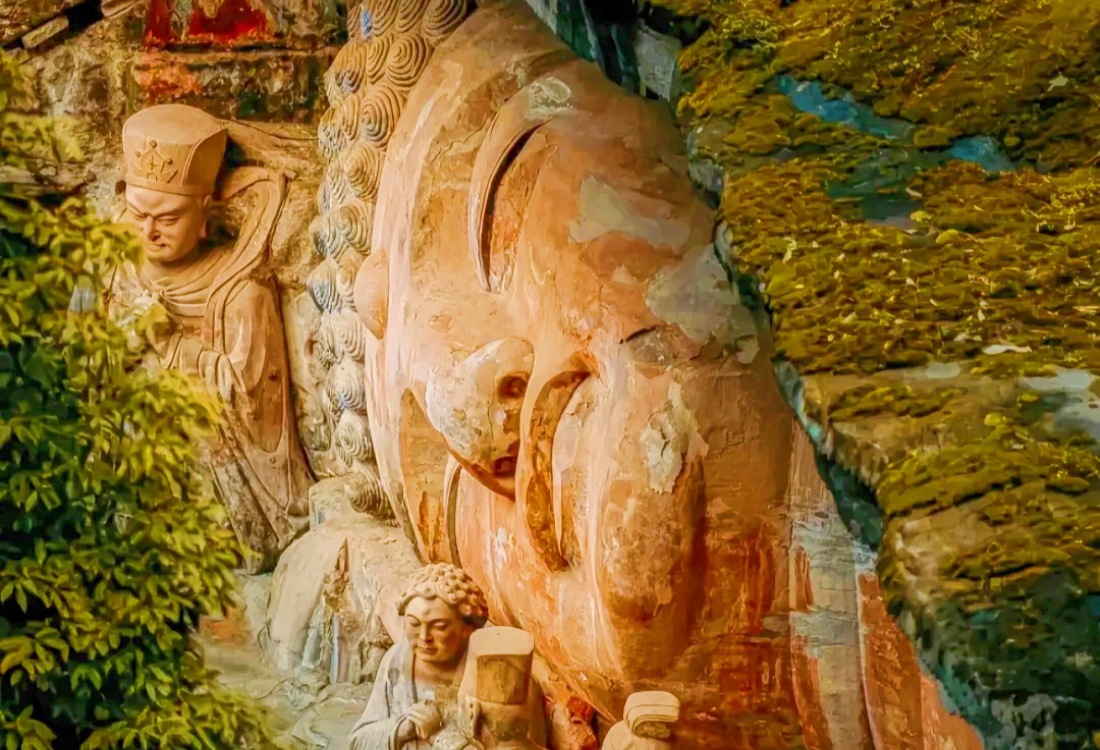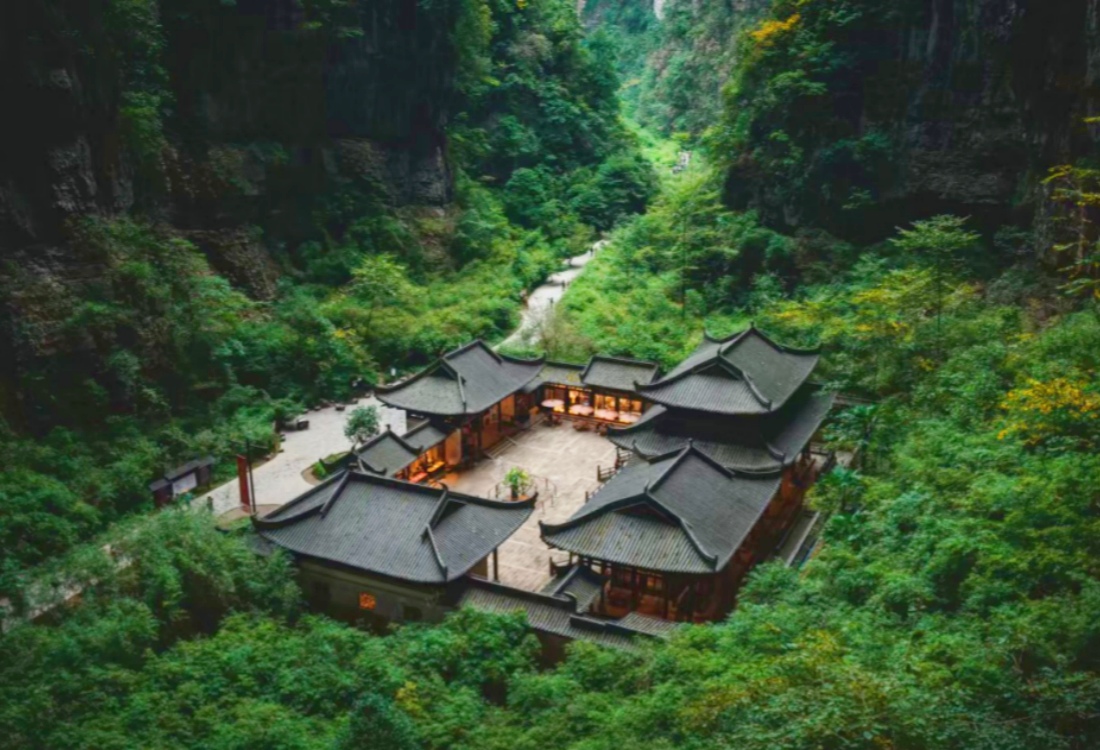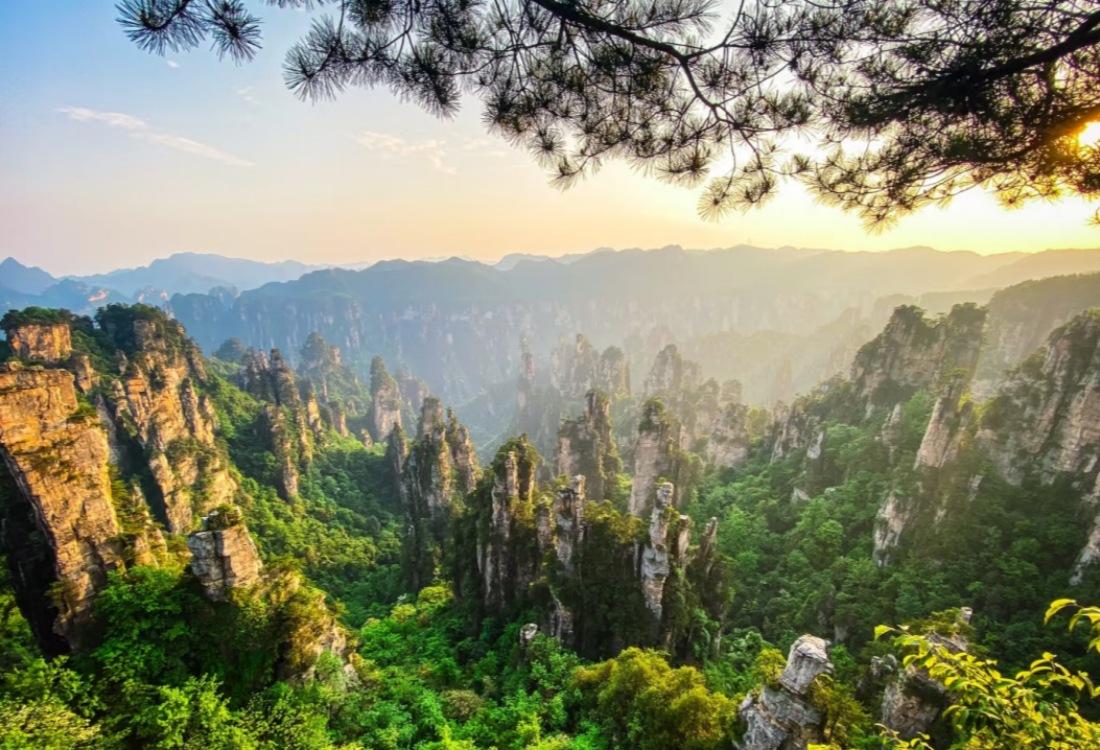Table of Contents
ToggleChongqing, one of China’s most dynamic cities, is not only famed for its mountainous terrain and spicy hotpot—it’s also home to two UNESCO World Heritage Sites: the Dazu Rock Carvings and the Wulong Karst National Geology Park. These two spectacular attractions offer a deep dive into both China’s spiritual artistry and its geological wonders, making Chongqing an unmissable stop for culture and nature lovers.
Dazu Rock Carvings: A Timeless Masterpiece of Buddhist Art
Located about 120 km west of central Chongqing, the Dazu Rock Carvings (大足石刻) are a breathtaking collection of over 50,000 statues and 100,000 Chinese characters carved into cliff faces between the 9th and 13th centuries. These carvings are spread across multiple sites, but the most significant ones are at Baoding Mountain and Beishan (North Hill).
Why is unique about Dazu?
What makes Dazu unique is its integration of Confucianism, Buddhism, and Taoism, all represented in stunning detail. Unlike other grottoes in China that focus mainly on Buddhist figures, the Dazu carvings also reflect the daily lives, moral lessons, and philosophies of ancient Chinese society. These works of art stand out for their exceptional realism, emotional expression, and harmonious proportions.
Must-see highlights include the giant reclining Buddha, the 1,000-handed Guanyin (Goddess of Mercy), and vivid depictions of heaven and hell. The carvings are remarkably well preserved, thanks to their protected location and careful maintenance.
Travel Tip: Visit early in the morning or late afternoon to avoid crowds and catch the carvings in the softest natural light. A local guide will help you understand the deeper meaning behind each scene.
Wulong Karst National Geology Park: A Landscape Sculpted by Time

About 130 km east of Chongqing lies the Wulong Karst National Geology Park (武隆喀斯特), another UNESCO World Heritage Site that showcases the surreal beauty of China’s limestone landscape. Part of the South China Karst region, Wulong features three major scenic areas: Three Natural Bridges, Furong Cave, and Houping Giant Doline.
Thre major senic areas of Wulong
The most famous is the Three Natural Bridges (Tianlong, Qinglong, and Heilong), a series of colossal stone archways soaring above lush gorges. This awe-inspiring setting was even featured in films like Transformers: Age of Extinction. Visitors can hike through the gorge beneath these bridges, taking in the sheer vertical cliffs, waterfalls, and misty greenery that give the area a dreamlike feel.
Furong Cave, meanwhile, is one of China’s largest limestone caves, filled with glittering stalactites and stalagmites that stretch into massive underground chambers. It’s a surreal world formed over millions of years, showcasing nature’s artistry at its finest.
The Houping Giant Doline, situated in Wulong County near Chongqing, China, is an extraordinary geological marvel and holds the title of the world’s largest cluster of erosion-formed sinkholes. Covering an area of approximately 150,000 square meters, this formation comprises five interconnected sinkholes, each measuring around 300 meters in both diameter and depth. Created through the erosion of Ordovician limestone, this natural wonder presents a distinct ecosystem, making it an ideal location for geological research and eco-tourism enthusiasts.
Travel Tip: Wear comfortable walking shoes, bring a light rain jacket, and prepare for a good amount of stairs and walking. The weather can change quickly in the karst region, and fog often enhances the dramatic scenery.
Why Visit These Two Sites Together?
Pairing the Dazu Rock Carvings and Wulong Karst Park in your Chongqing itinerary gives you a perfect balance of cultural depth and natural wonder. While Dazu tells the spiritual and philosophical story of ancient China through intricate carvings, Wulong immerses you in geological time, showcasing the raw power of nature’s forces.
Both sites are accessible via day trips or overnight excursions from Chongqing, and each offers a completely different yet equally enriching experience. Together, they reflect the incredible diversity of Chongqing’s attractions.
UNESCO Wonders in the Heart of Chongqing
Chongqing’s UNESCO sites are more than just sightseeing stops—they are immersive journeys into the soul of China. Whether you’re gazing at the spiritual serenity of the Dazu Rock Carvings or standing in awe beneath the towering natural bridges of Wulong, you’ll come away with a deeper appreciation for the artistry, history, and natural beauty that make Chongqing truly unique.
For travellers seeking an unforgettable cultural and scenic adventure, Dazu and Wulong are must-see destinations on your China journey.









